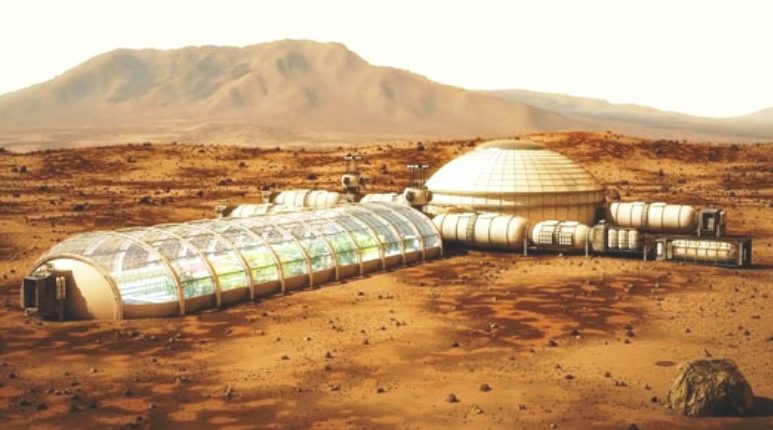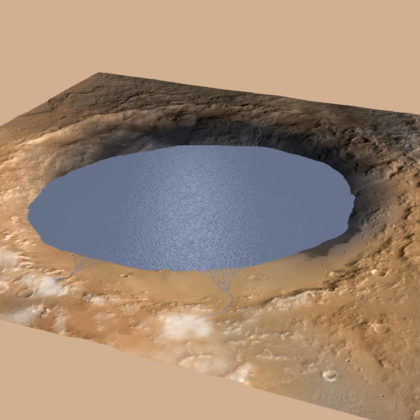
Isn’t it time to think about the future and change everything in your life? It is this phrase that often inspires people with optimism and makes them leave their native places and go on a long journey in order to move to a more promising place in their opinion. But optimism goes away, and the move is not always successful. Today’s speculations about the human flight to Mars are reminiscent of this question – they inspire optimism, but they can tell nothing about the results.
The fact is that the main mission to find evidence of life on Mars is almost complete. At least, this was reported at a press conference at the American Geophysical Union in San Francisco, held in December 2016, at which some of the finds were presented.
Thus, according to the results of the Curiosity rover, finger-like rock structures on Mars were described and, moreover, described as possible confirmation of the presence of life on Mars in the past. Here is what NASA scientist Yasmin Saplakoglu said:
“Based on rock samples collected from hot springs in Chile, the team is now suggesting that photosynthetic microorganisms buried in the rock are likely to create these unusual structures.”
Another scientist, Eric Berger, noted: ‘Mars was once a world with a lot of water and a rich chemical composition.’ In his opinion, boron found on the planet is an obvious indicator of the planet’s habitability in the past.
Thus, scientists suggest that somewhere 3.8 billion years ago, conditions on Mars were almost identical to those that exist on Earth today: a temperate climate and a sufficient amount of liquid water. The water in the Gale crater, in their opinion, was completely drinkable, and indeed Mars was completely different, dynamic and almost cozy. And everything would be good and it seems so obvious, except for one ‘but’ – direct evidence of the existence of life on the planet even now, even though in the past, scientists have not found.
 Curiosity rover travel trajectory. Traveled and planned path. Curiosity rover travel trajectory. Traveled and planned path. |
 Estimated volume of water in crater Gale 3.5 billion years ago Estimated volume of water in crater Gale 3.5 billion years ago |
But back to talking about flying to Mars. Ambitious plans on this topic and on the topic of the colonization of the Red Planet were described in his speech by the head of the American company Space X Elon Musk. Anyone can watch his two-hour speech today on the company’s YouTube channel.
Indeed, the use of hibernation mode in theory is an excellent strategy for manned astronautics, including a flight to Mars. This would save a lot of money, since sleeping astronauts require less food and generate less waste. So the scientist Xisi Zhang made a publication in Scienceline that every extra pound of payload on the ship adds more than $ 40,000 to the cost of the mission. Hibernation will help avoid boredom and possibly make astronauts more resistant to radiation.
But here is a little trouble – homosapiens are not mammals hibernating. To do this, a person needs to reach a body temperature of only 86-90 degrees Fahrenheit. According to Zhang, scientists have already made significant progress in this direction and have managed to cool laboratory hamsters to the required temperature and euthanize for a long period, while maintaining their viability. Apparently, Zhang believes that there is no significant difference between a hamster and a person – living beings, after all.
Well, let’s say the scientists succeeded, the human metabolic rate was reduced by 80%, it was possible to freeze it for 3-5 years and even find out that it unexpectedly remained alive after that, having safely landed on Mars. Orderly “slept” and “recovered” after, it seemed to him one moment, travel, the person holds the plan of the colony in his hands and smiles towards a bright future?
Even billions of years ago, the temperature on Mars was high enough for running water and, perhaps, even for the existence of life, today Mars is simply a very cold desert (the average surface temperature is -60 degrees Celsius). But can this really stop the innovators of NASA?
Agency spokesman Christopher McKay suggests that humanity can increase the temperature of Mars to 15 degrees Celsius over a century: “The most efficient method is to create supergreenhouse gases such as chlorofluorocarbons or, even better, perfluorinated compounds.” But instead of talking about what needs to be done for this, he squeezed out a rather strange populist phrase “Life on Mars would be grateful for terraforming, which will return the planet to the state in which it once was.”
Researcher Jacqueline Ronson described one such possibility in Inverse: She proposed putting genetically modified bacteria in the soil and making them form a kind of concrete. In her research, several experiments are presented in the direction of the activity of microbes to create materials for building life in terrestrial conditions. However, later, these experiments interested the expert of microbiology, Jonathan Aizen, and made him think that all this is very interesting, but hardly possible and most likely not ethical.
Thus, the reality show called ‘colonization of Mars’ so far takes place exclusively on Earth and is more of a political and populist project than a scientific one. This is about what NASA will do over the next four years and whether Trump, the famous entrepreneur, would like to get rid of some, in his opinion, unnecessary costs. Today, space programs associated with the conquest of Mars are presented in scientific circles as ‘raw’, to put it mildly, ‘too expensive to increase the rating’ in political circles, and for most taxpayers they look like a cut of the country’s budget.
The same can be said about Roscosmos and ESA. The Russian-European mission ‘ExoMars’ was not so successful for testing – the demonstration of landing the module on Mars failed. But the next step will be to deliver not just a module, but a much more expensive rover. That is, in fact, the landing on the Red Planet has not yet been fully worked out, and conversations about its conquest are already underway and even relevant programs for the 30s and corresponding subsidies from the budget have been created.
So it turns out that all these arguments about the colonization of Mars today look as ridiculous as talk about the creation of a city right at one of the poles of the Earth. Maybe? Perhaps, perhaps. But how to do this and most importantly – why? These two questions may sound different.
Edited by Dmitry Kolupaev
Sources: Phys






